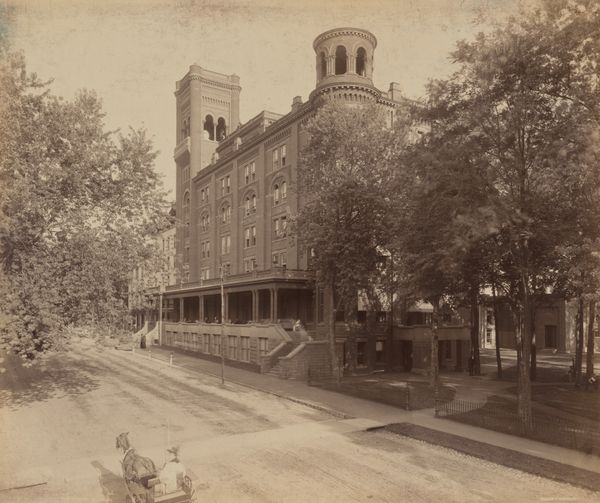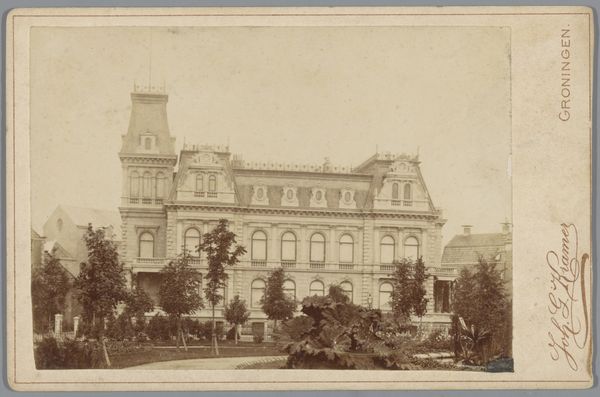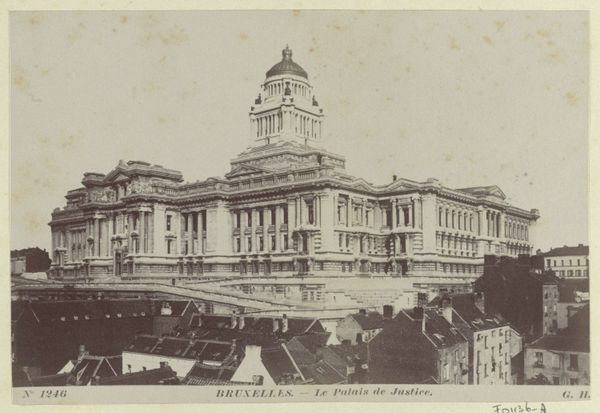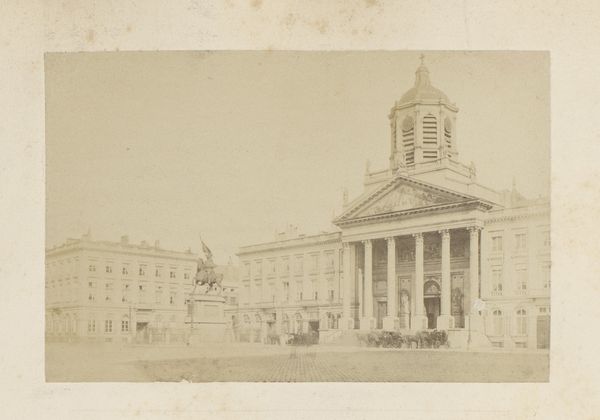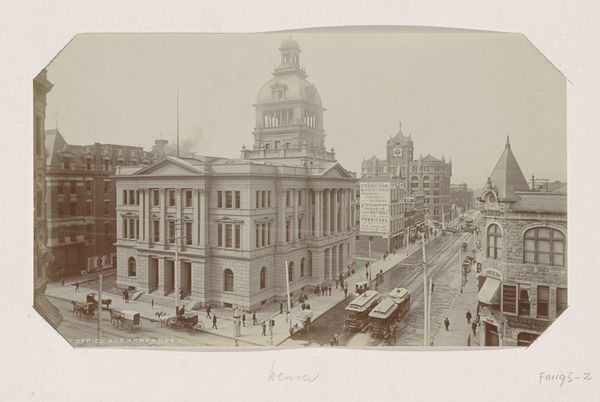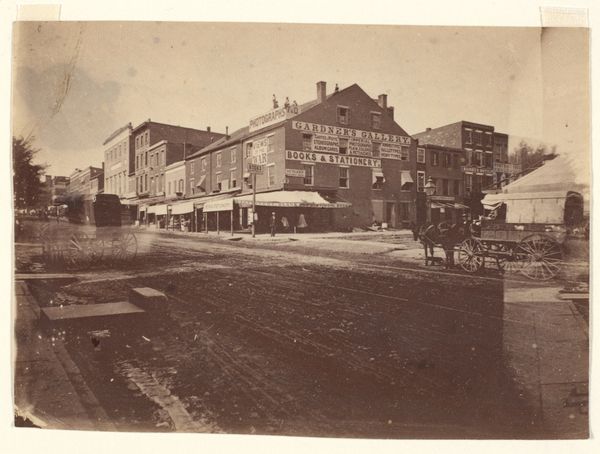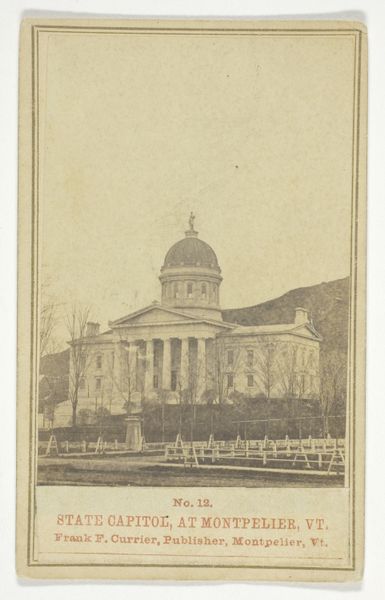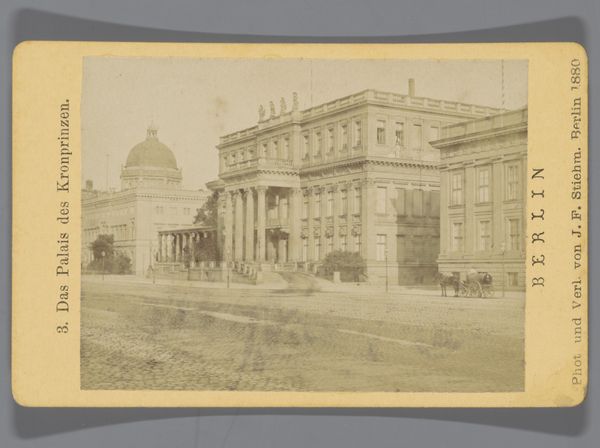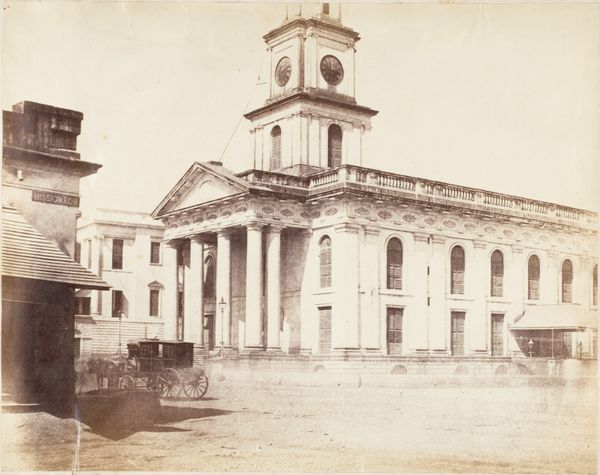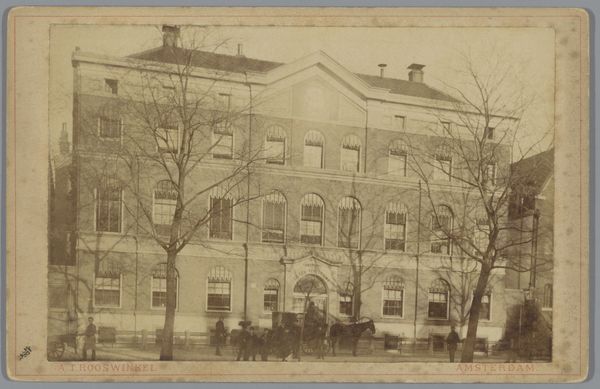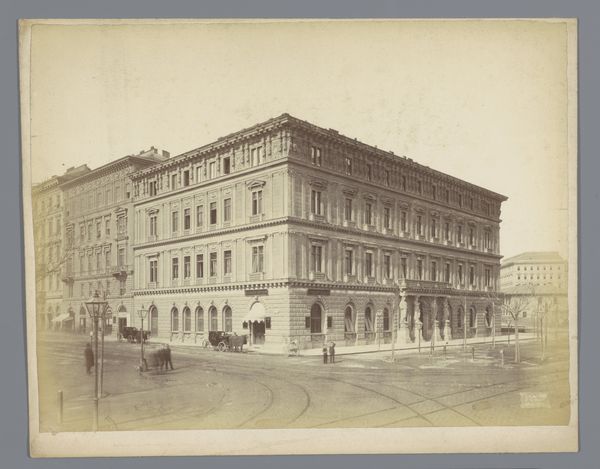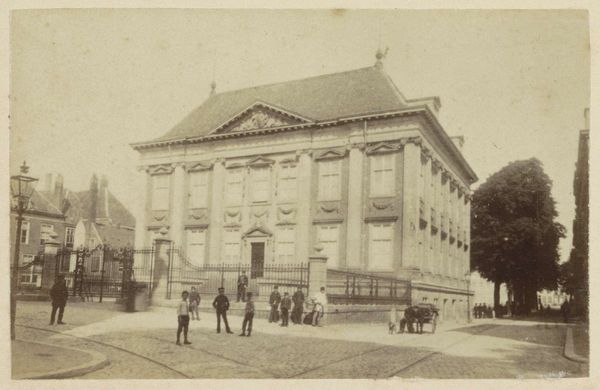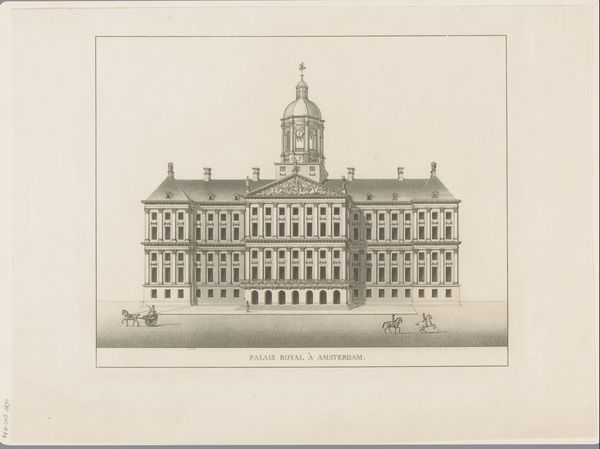
photography, gelatin-silver-print, architecture
#
photography
#
gelatin-silver-print
#
cityscape
#
architecture
#
realism
Dimensions: image/sheet: 9.5 × 5.5 cm (3 3/4 × 2 3/16 in.) mount: 10 × 6 cm (3 15/16 × 2 3/8 in.)
Copyright: National Gallery of Art: CC0 1.0
Curator: The first impression I get is that the scale feels grand, monumental, yet somewhat impersonal, doesn't it? Editor: Absolutely. The imposing edifice certainly projects authority, yet there’s something about the neutral tones and slightly blurry detail of the gelatin silver print that renders it detached, distant even. The Academy of Music, captured here circa 1860, Chicago by Crater's Union Photographic Gallery embodies, to me, more than a mere structure. It’s about the ideals it upholds, who has access, and its contribution to culture. Curator: Precisely. The building's architectural style reflects a confidence in civic institutions. I am fascinated by its positioning within the city. Editor: And its accessibility. Notice those figures gathered at the entrance, a mixed crowd seemingly, yet undoubtedly shaped by class and race. What possibilities did this academy promise? Was it a genuinely democratic space or merely aspirational? Were those possibilities, those aspirations, fairly distributed? What was really going on inside this 'academy' regarding diversity, equal access? Who performed there, and for whom? The answers to these questions will really give an insight into the piece and the building that it represents. Curator: That's where it really becomes intriguing—tracing its history and cultural function. Were diverse communities fairly represented on stage and within its audience? Or was this merely performative progressiveness that perpetuated societal exclusions? Early photographic studios were complex spaces as well, often negotiating between art, documentation, and commerce, depending on the prevailing trends and biases. This also impacts how this Academy was initially seen by different groups, especially because it could offer "cheap" ways to gain entry and feel empowered to perform or even simply enjoy the arts in an industrial environment that threatened to overwhelm and exploit the individual. Editor: It invites us to question not only what it represents but also whom it served—to see beyond its grand facade and to examine the structures of power and exclusion that may have been embedded within its walls. Looking closer makes me consider whether there is truth in its representation; can something manmade ever truly create equal opportunity for enjoyment, wealth, fame, or respect. Curator: The building’s symbolic resonance underscores architecture's role as a stage for power, aspiration, and possibly, the performative dimensions of inclusion and exclusion. Its beauty still speaks of what it means to have opportunity through art and creativity. Editor: Agreed. Its historical location and aesthetic remain a testament to a city's striving for cultural legitimacy, albeit a project laden with the complexities of inclusion and societal advancement.
Comments
No comments
Be the first to comment and join the conversation on the ultimate creative platform.
